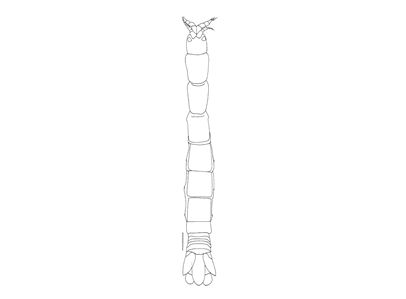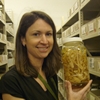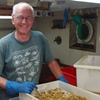General Description
Pereopod I palm more or less axial; antenna I flagellum with 7 articles. Telson broad over most of length and rounded terminally; articles 5 and 6 of pereopods 4-7 with 2 and 3 spines respectively. Male uropodal rami broadened, these and dorsum of telson especially setose.
Biology
This isopod is an active predator that uses its hook-like hands to grasp its prey and its biting mouthparts to make a meal of it. Australian species of Paranthura are sexually dimorphic; males differ from juveniles and females in antenna 1, pereopods, uropods and telson.
Habitat
Intertidal to depth of 5.5 m.
Reefs
Distribution guide
Southern Australia.
Species Group
Depth
Shore (0-1 m)
Shallow (1-30 m)
Water Column
Max Size
15.4 mm
Diet
Organic matter
Commercial Species
No
Global Dispersal
Recorded in Australia
Conservation Status
- DSE Advisory List : Not listed
- EPBC Act 1999 : Not listed
- IUCN Red List : Not listed






